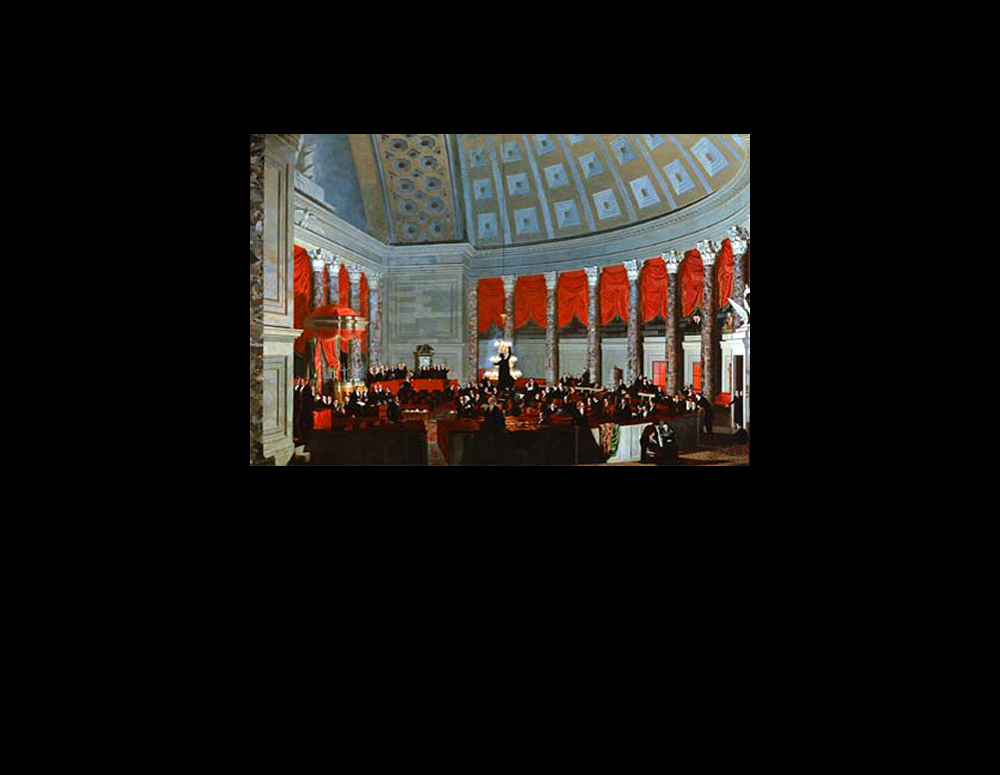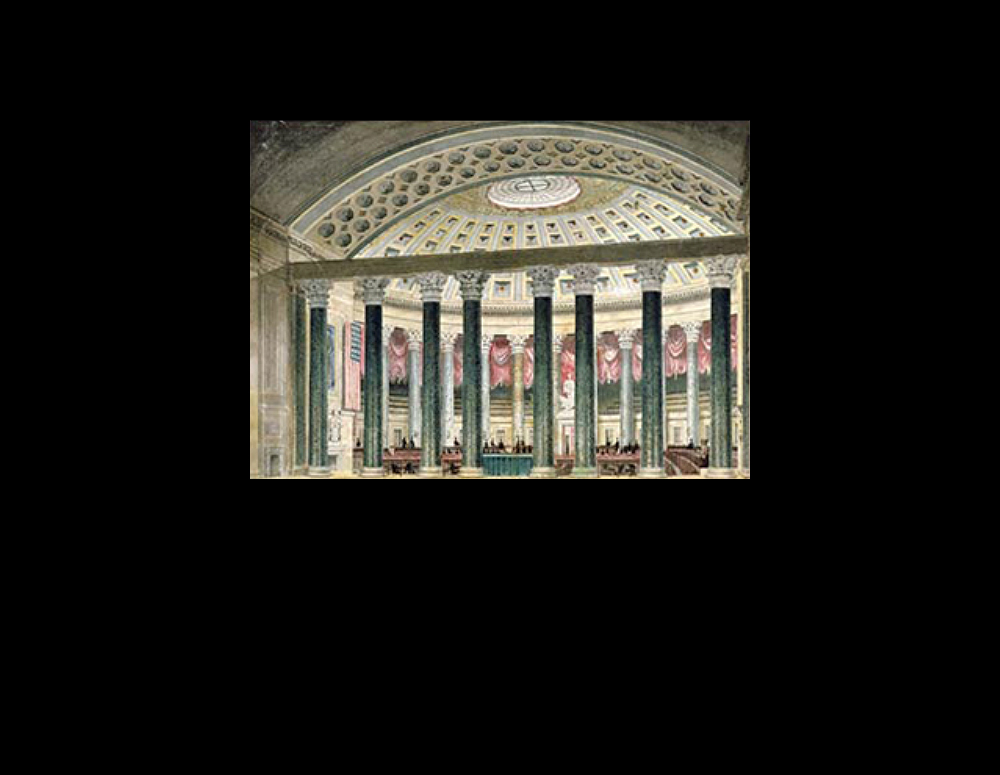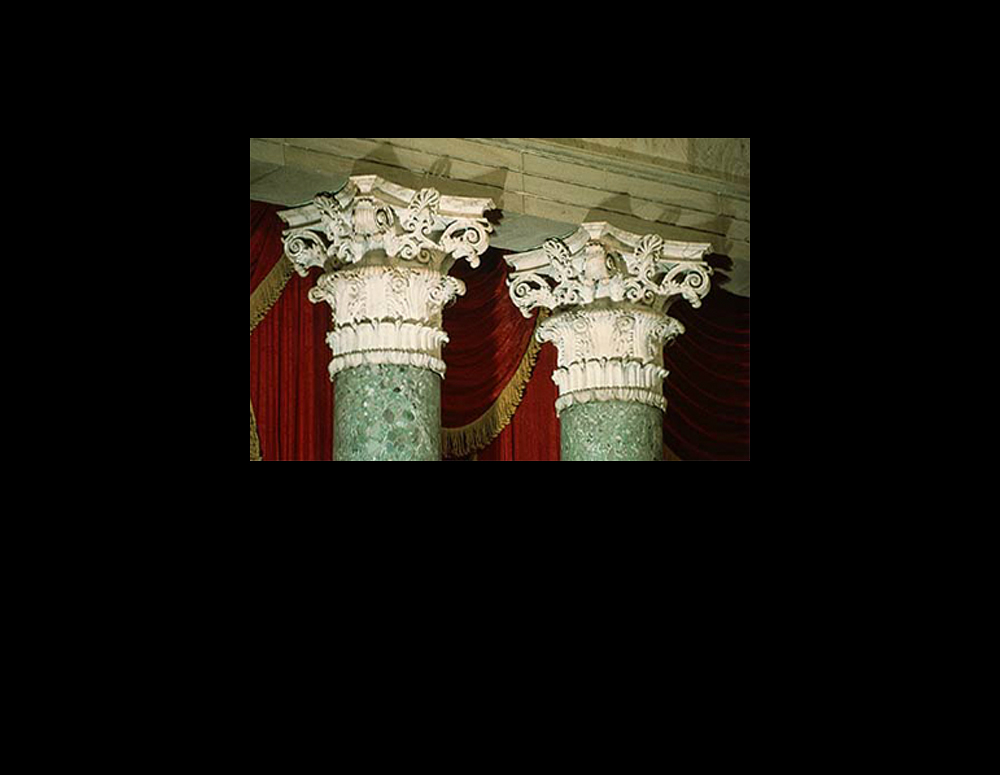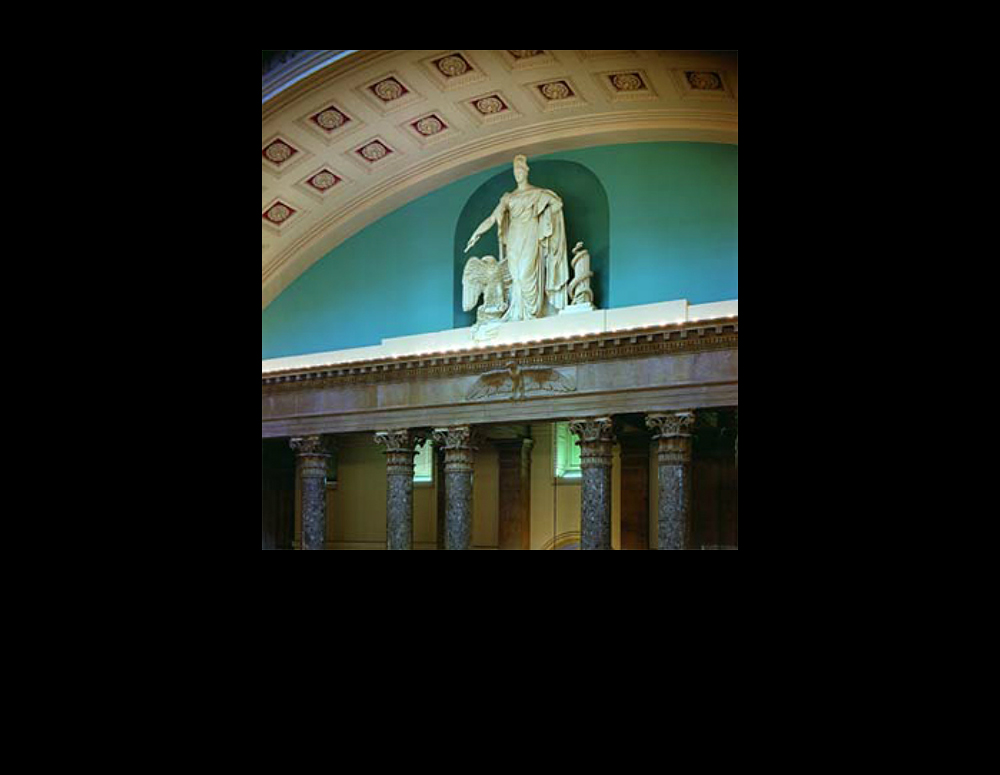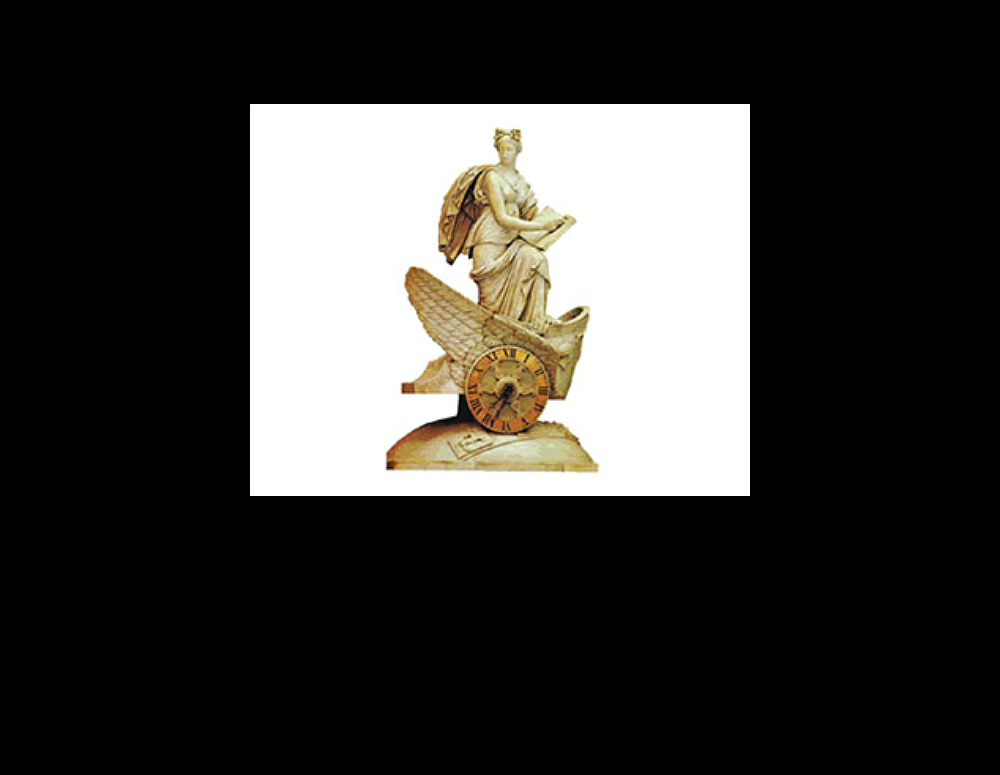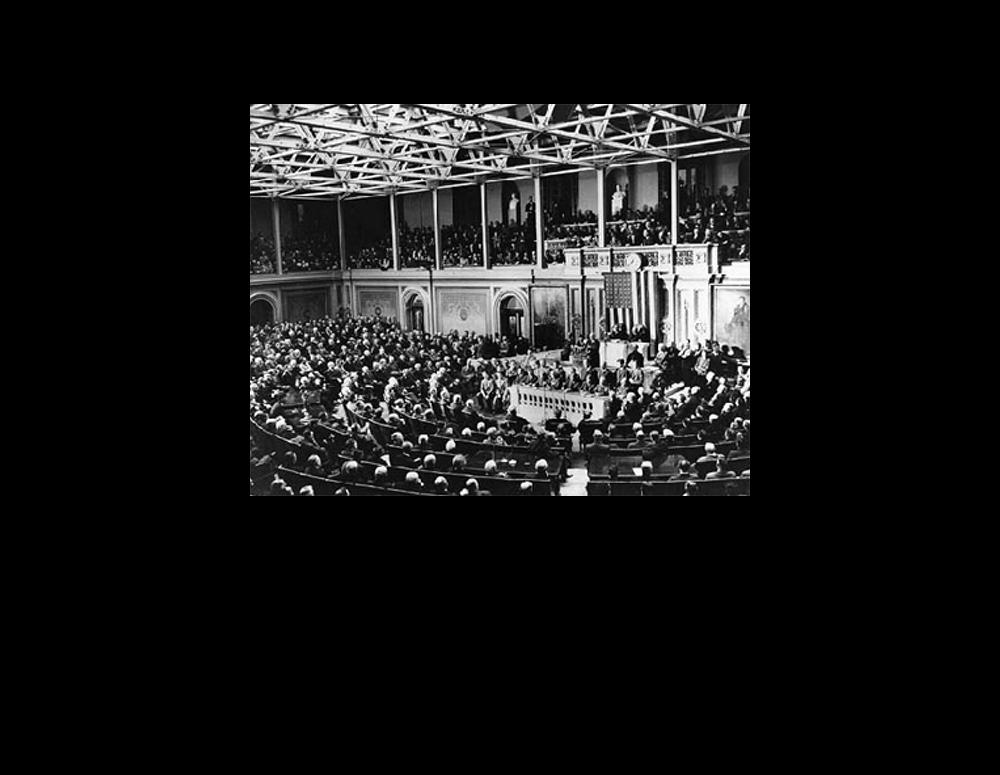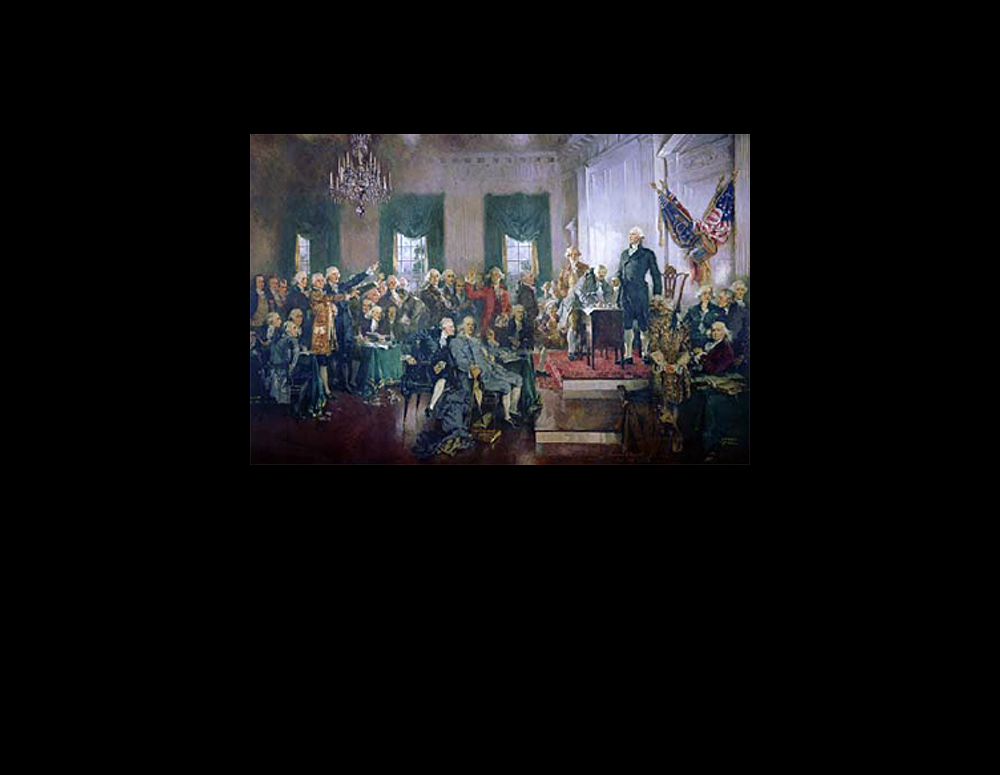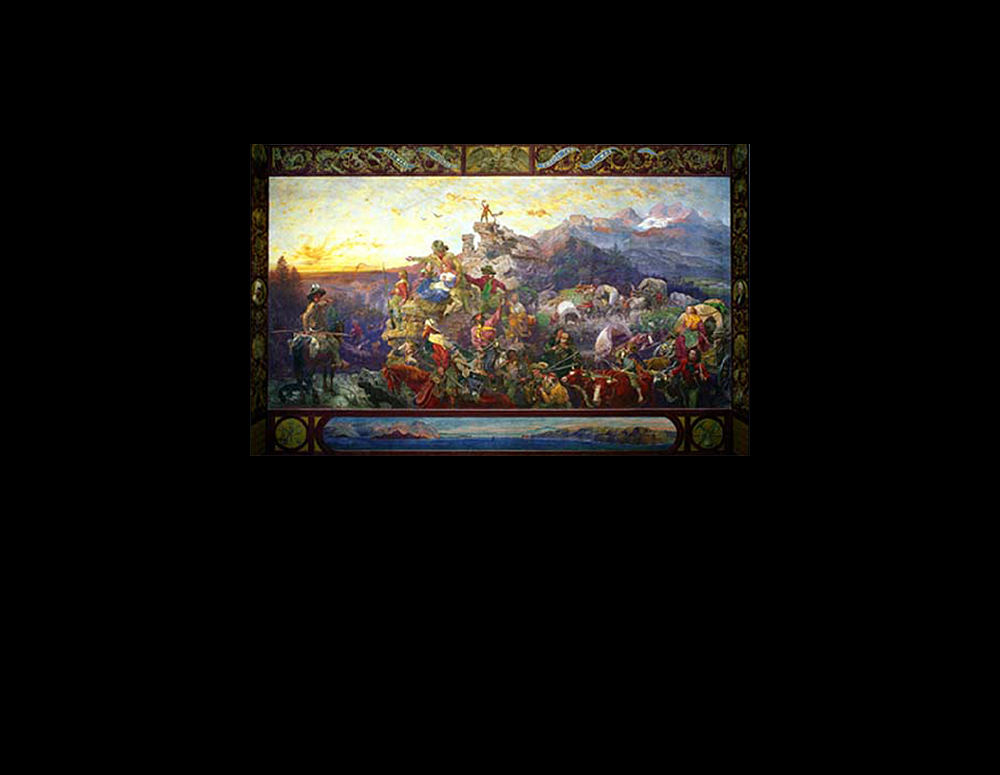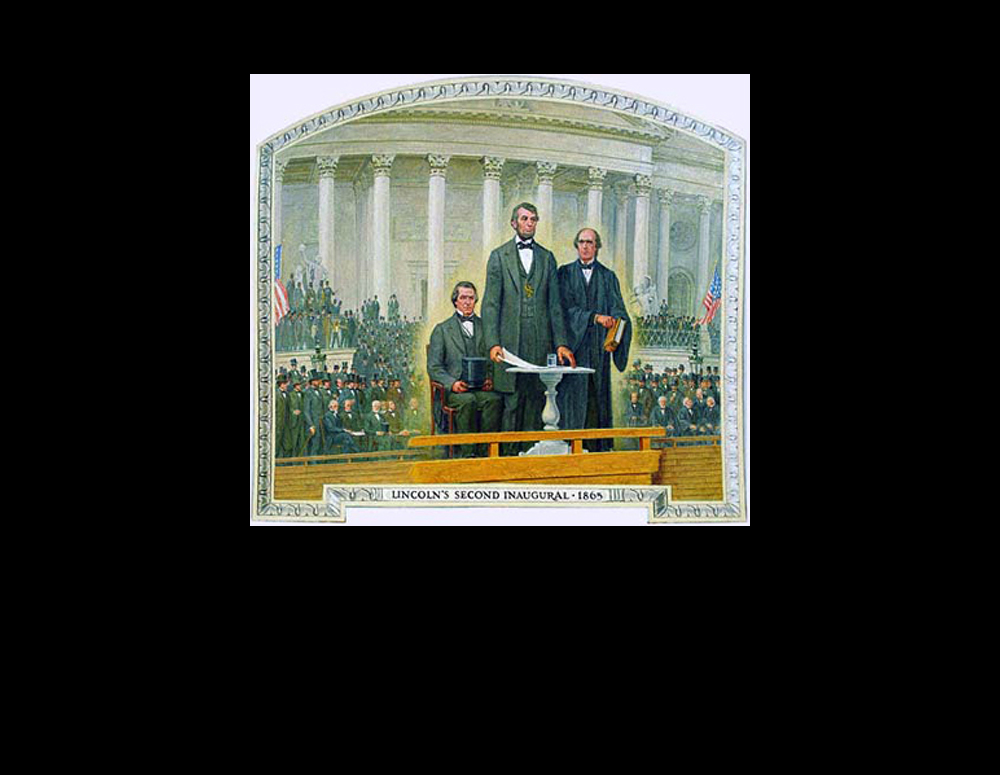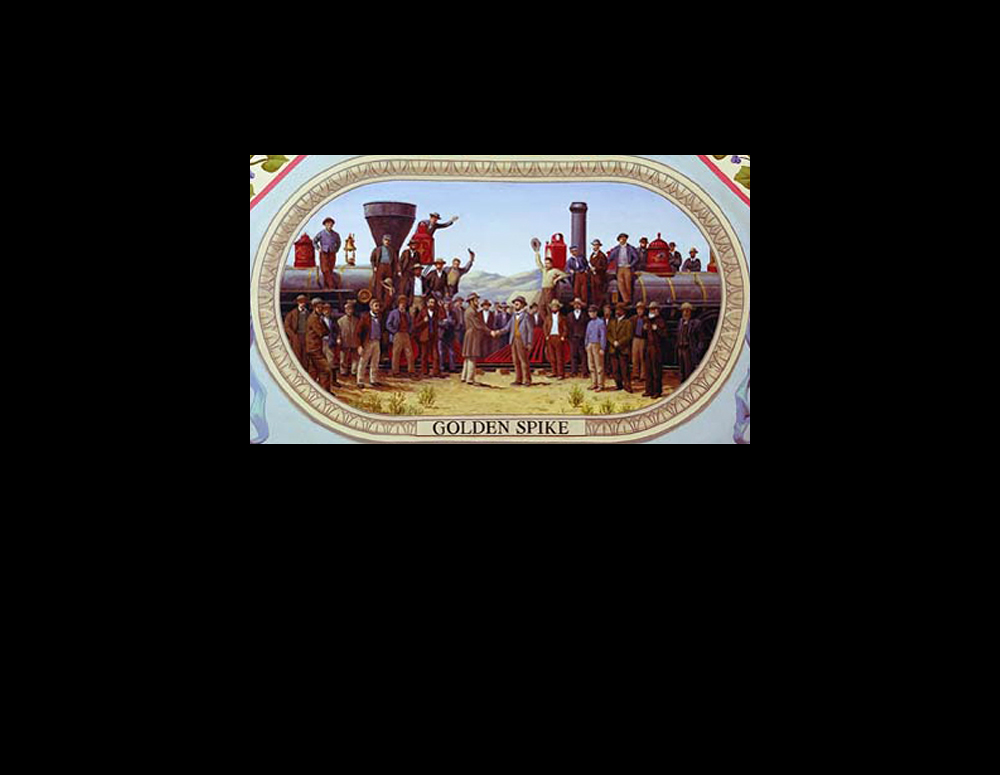The U.S. House of Representatives
Alexander Hamilton’s simple explanation of representative government –“Here, Sir, the people govern”– is epitomized by the U.S. House of Representatives.
When Congress moved into the Capitol in November 1800, a population of about five million people was represented by 106 Members of the House of Representatives and 32 Senators. By 1845 there were more than 20 million people in 28 states and 226 House Members and 56 Senators. This growth required enlarging the Capitol to accommodate larger legislative chambers. In 1911 Congress stopped the expansion in House seats at 435 Members.
Members of the House of Representatives are elected for two year terms. The Speaker of the House, elected by the membership, presides or designates a Member to preside over sessions. The unique legislative powers of the House include the right to originate appropriations and tax bills, to impeach federal officials, and to elect the President when the electoral college is unable to do so.
I. THE OLD HOUSE CHAMBER by LATROBE: Three rooms in the original Capitol were designed as chambers for the House of Representatives. The first was the wood “Oven” located on the site where the House wing was later built. It was replaced by the second hall for the House designed by Jefferson and Latrobe, which was destroyed when British troops burned the Capitol in 1814. Latrobe replaced it with the chamber, now known as Statuary Hall, that served as the Hall of the House from 1819 to 1857.
II. NEW HOUSE WING by WALTER: Thomas U. Walter and Montgomery C. Meigs designed the new House Chamber as a rectangle with a central well and a flat ceiling in response to contemporary scientific knowledge about acoustics. A glass ceiling set in a cast-iron framework spanned the 93 x 139-foot room, a landmark engineering accomplishment. State seals painted on the outer ring of glass panels in 1856 were replicated nearly a century later when the chamber was redecorated and an acoustical tile ceiling installed.
III. HOUSE WING ARTISTIC DECORATION: Though less ornately decorated than the Senate wing, the House wing features the first room adorned with murals by Constantino Brumidi and the Civil War era painting by Leutze celebrating the westward expansion of the nation. Beginning in the 1970s, the U.S. Capitol Historical Society sponsored three cycles of historical murals to decorate the ground floor corridors of the House wing. The “Hall of Capitols” (1973-74) by Allyn Cox portrays the meeting places of Congress and key events in the Capitol’s construction. Sixteen paintings in the “Great Experiment Hall” (1974-82) by Cox and his successor Cliff Young trace the growth of American democracy. The “Westward Expansion Corridor” (1993-94) by EverGreene Painting Studios combines maps and scenes to depict the territorial expansion of the country as its population moved from east to west.
Presentation End
